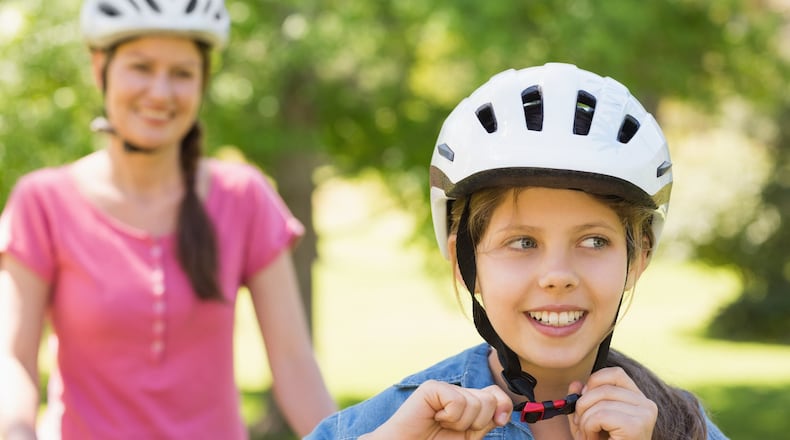“It’s important for bicyclists to wear properly-fitted bicycle helmets every time they ride. A helmet is the single most effective way to prevent head injury from a bicycle crash,” said Abbey Rymarczyk, Safe Kids Greater Dayton coordinator and community relations coordinator at Dayton Children’s Hospital. “But many children still do not wear them. We have a simple saying - Use your head. Wear a helmet.”
Safe Kids Greater Dayton reminds families to follow these other tips when biking:
• Teach children to ride in the same direction as traffic, as far to the right as possible. If they are younger than 10 years old, they should ride on the sidewalk.
• Obey all traffic signals and signs and use appropriate hand signals.
• Teach children to make eye contact with drivers to ensure they are seen before crossing in front of a car.
• Bright colors, reflective materials and lights are musts, especially when riding at dusk, dawn and evening hours.
• Ride with children until you’re comfortable that they are responsible to ride on their own.
For drivers, it’s important to remember to share the road. Intersections are notorious spots for collisions. When turning right make sure you check that a cyclist isn’t in your blind spot or right behind you. When turning left, check that bike lane to make sure it’s clear too. If you need to pass a cyclist, give three feet of clearance, passing by them slowly and smoothly. It can scare a cyclist, especially a child, if they hear a car accelerating behind them, even if you are just trying to get by quickly. As always, put down the cell phone. No text, email or phone call is worth someone’s life.
For more information, go online to www.safekids.org.
This look at a children’s health or safety issue comes from Dayton Children’s Hospital. Email: newsroom@childrensdayton.org.
About the Author
